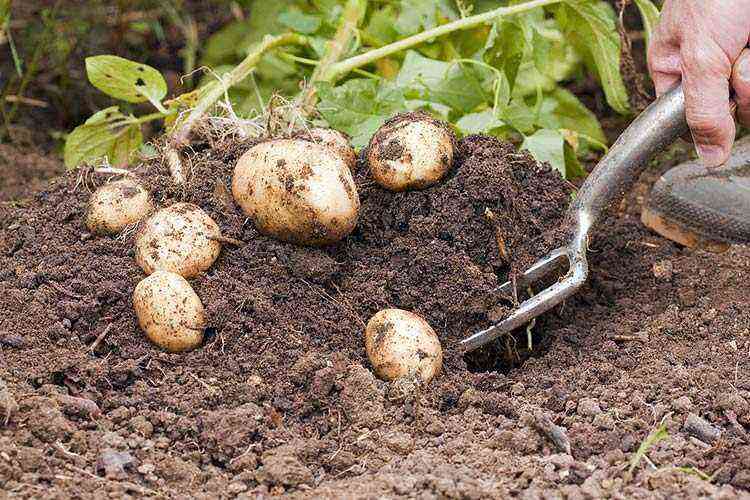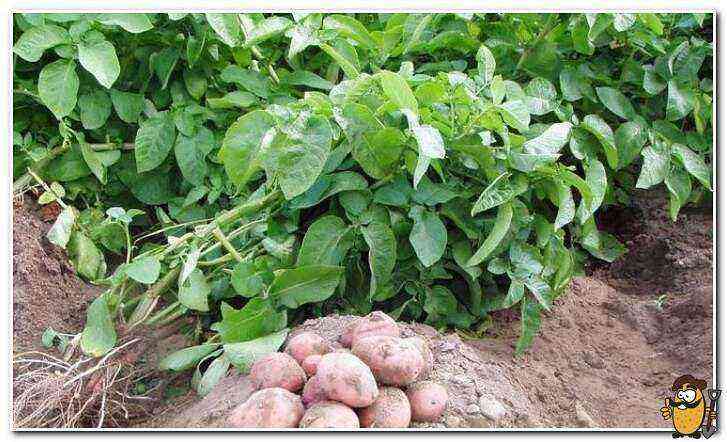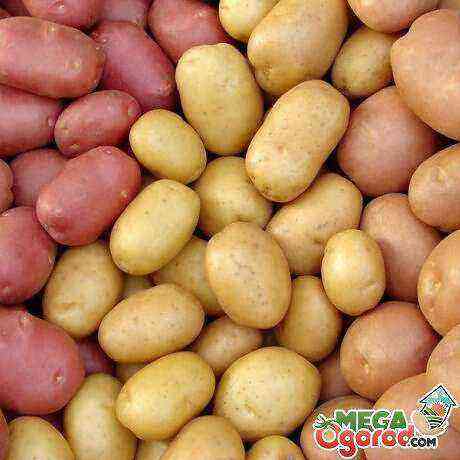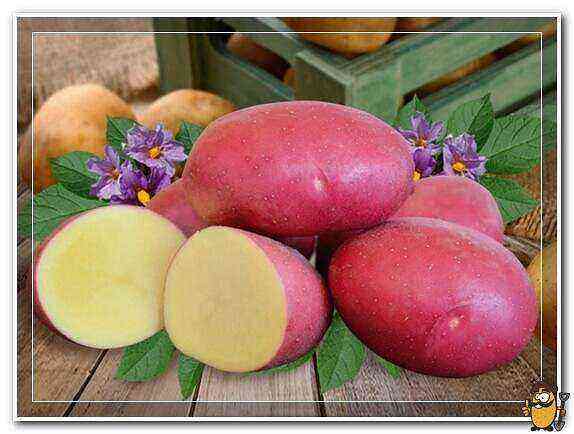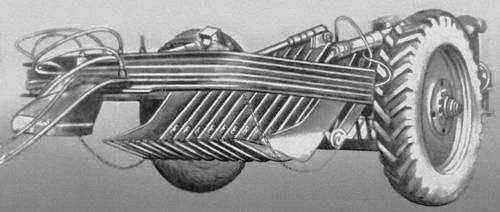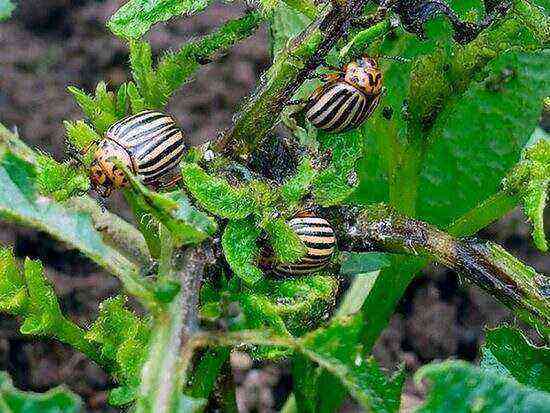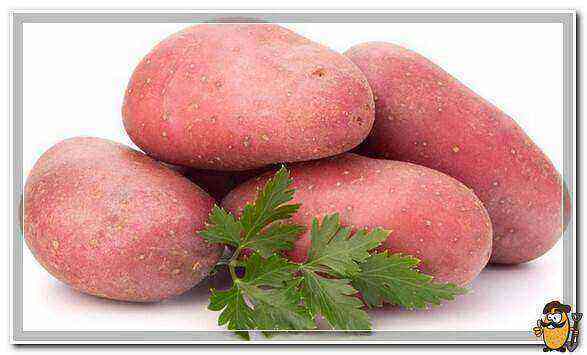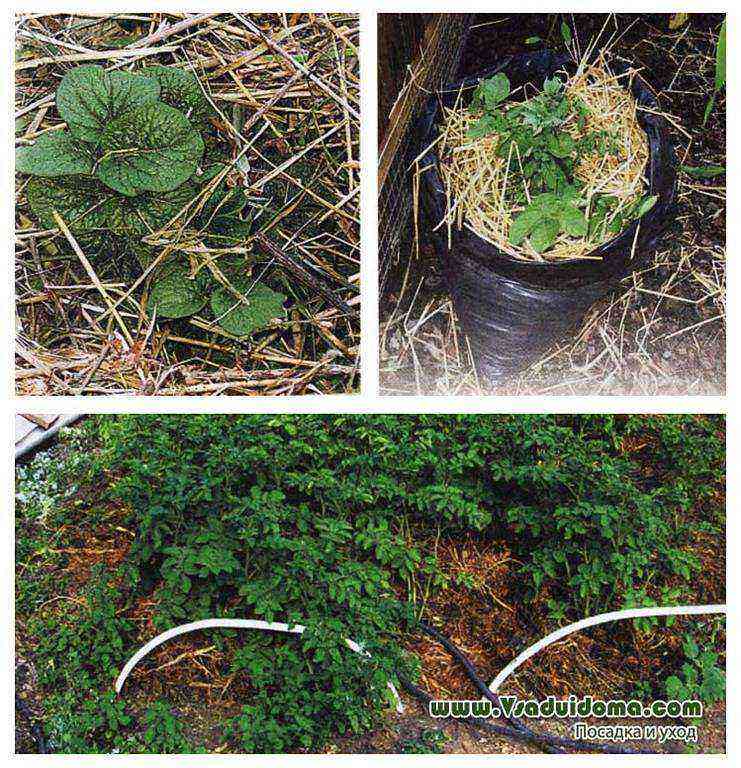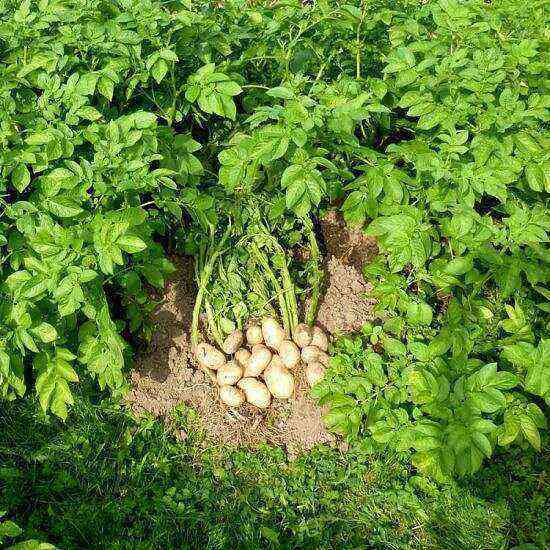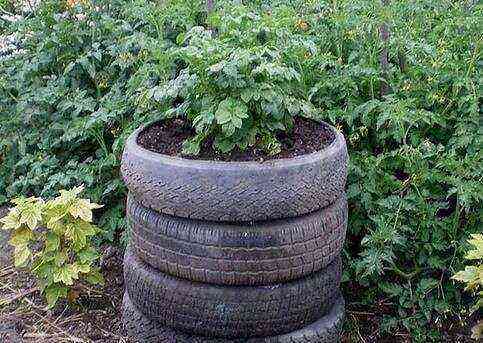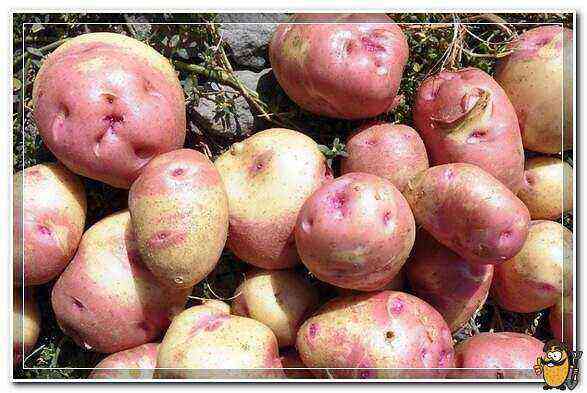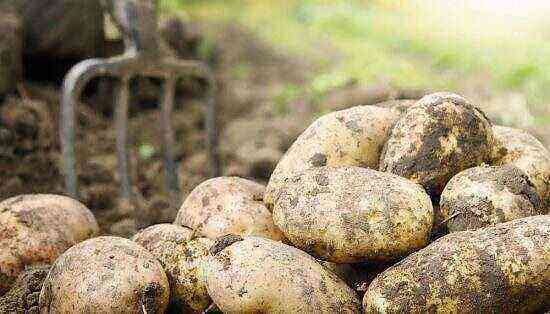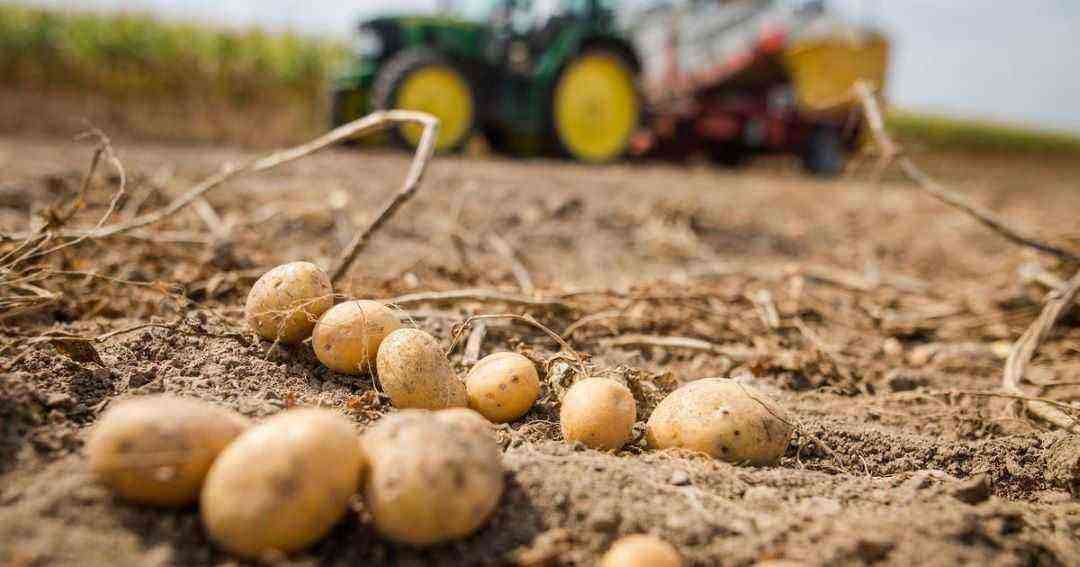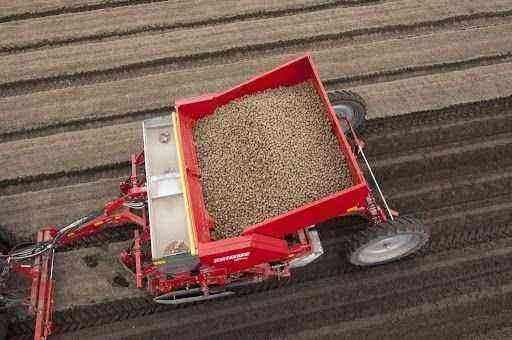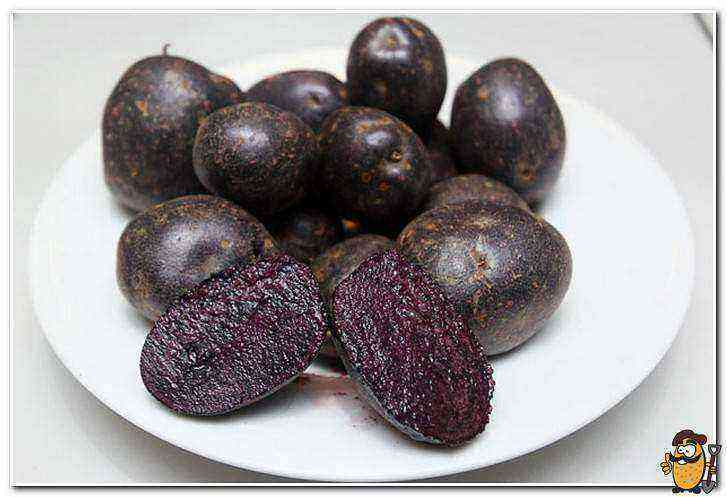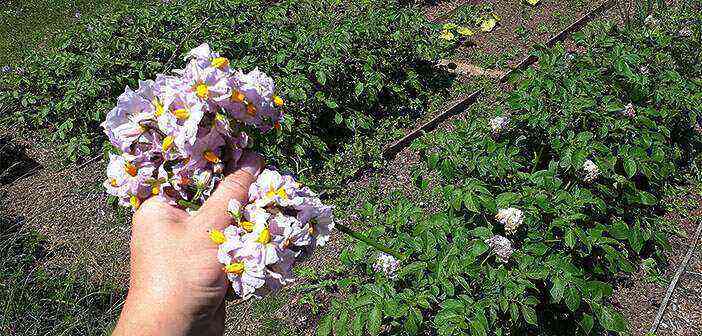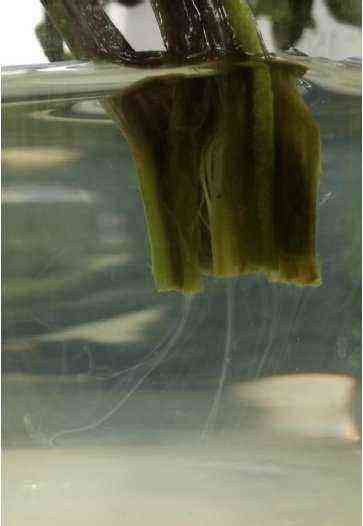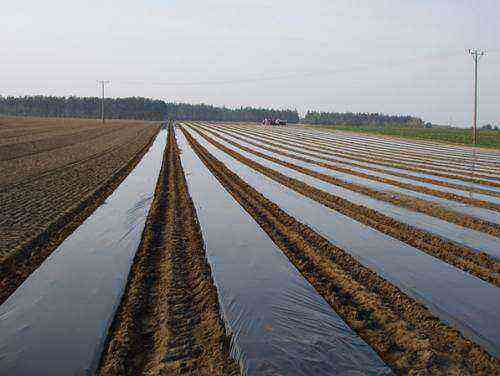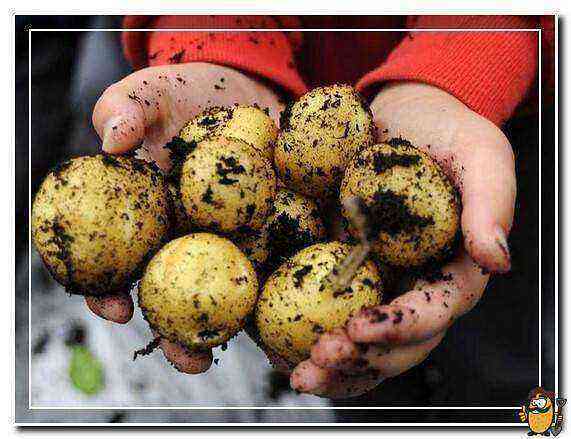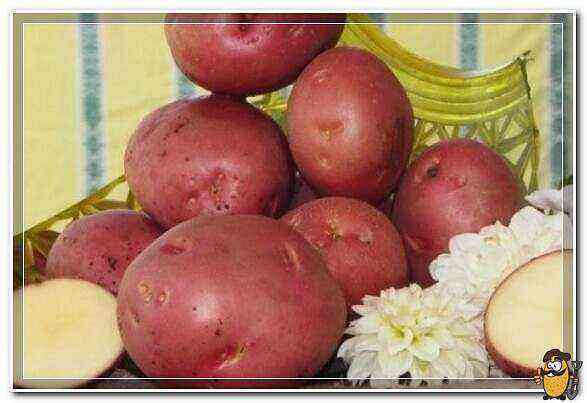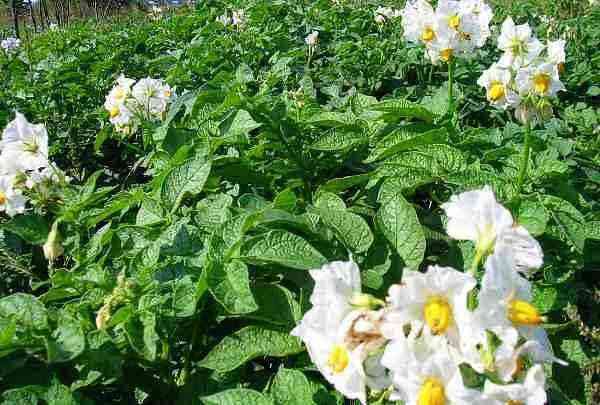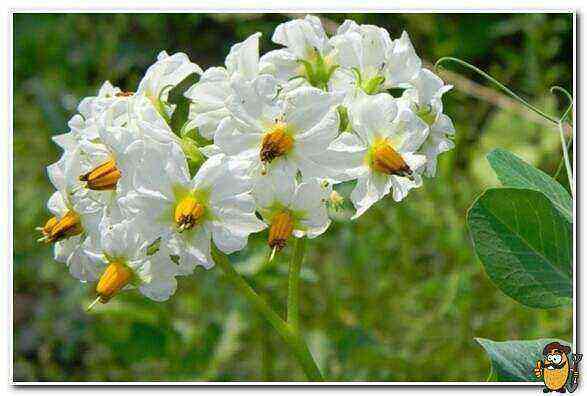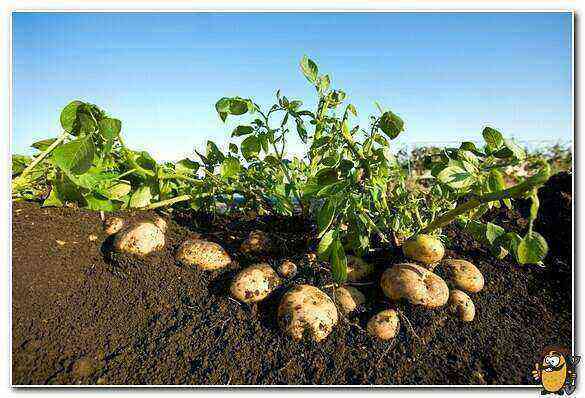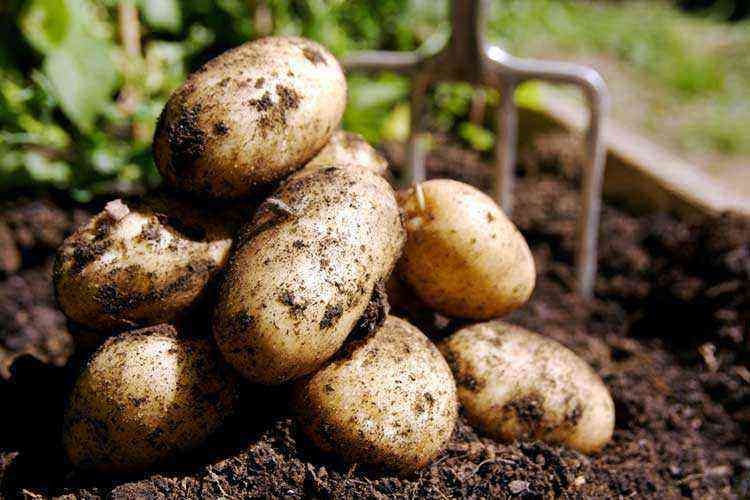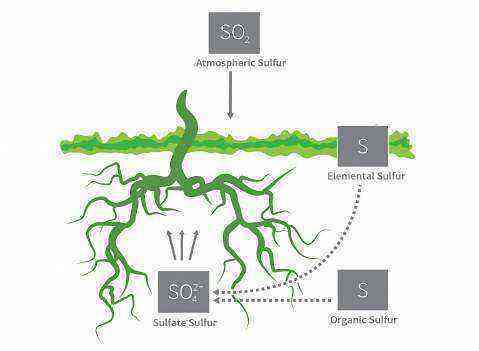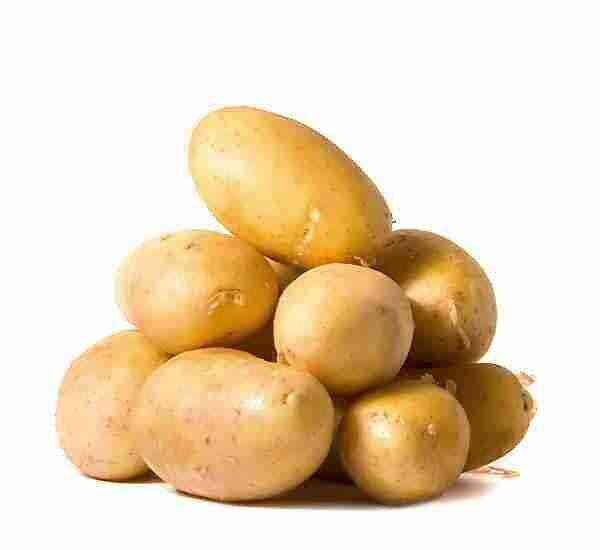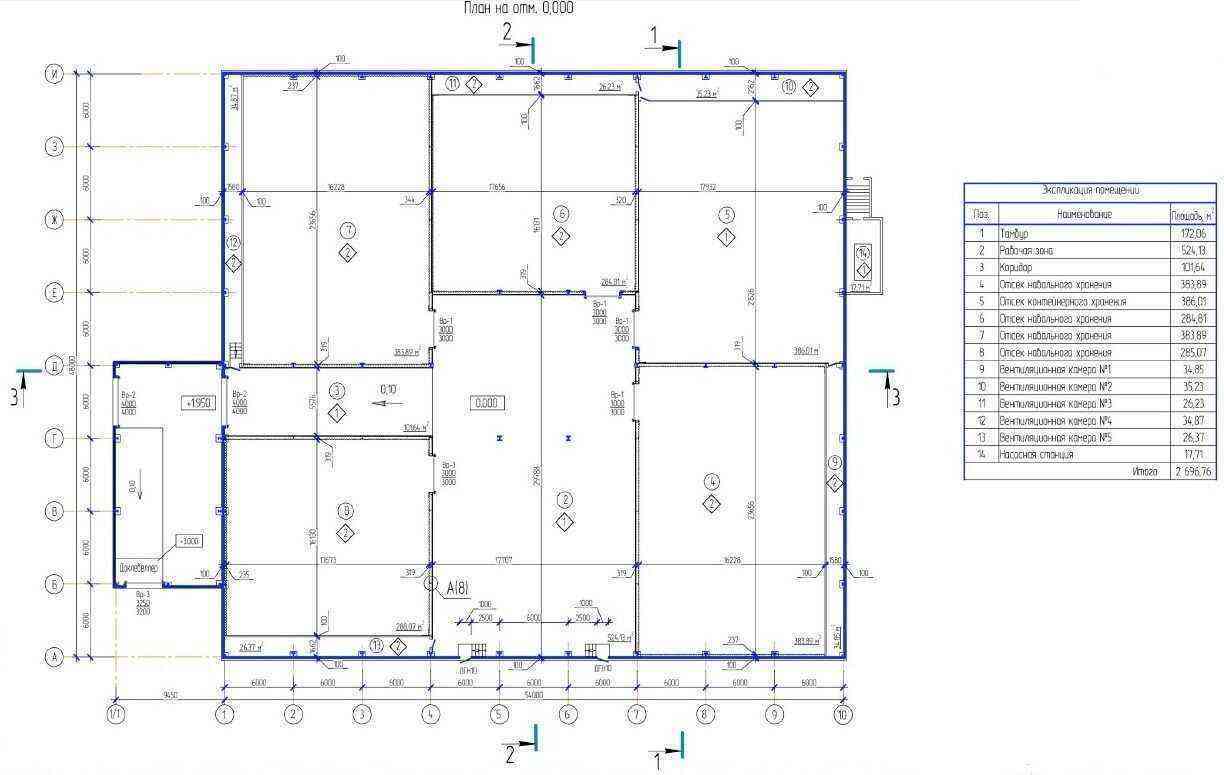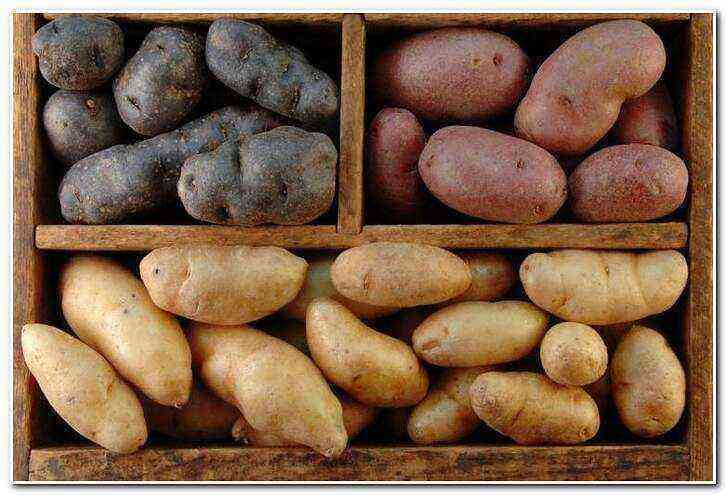The first young potatoes appear on the market at the beginning of May. It is difficult to pass by it without admiring the small dense tubers covered with a thin shaggy skin. But the prices for young potatoes are prohibitively high, and it is not known what doses of fertilizers were fed to them. Meanwhile, any summer resident can grow an ecologically clean “village delicacy” in May.
Having mastered the technology of growing early potatoes under agrofibre or film, which allows you to get consistently high yields, you can diversify your own table, and make good money on the sale of early potatoes. At the same time, agricultural technology is simple and affordable.
Tubers of any potato, especially early ones, need three things to grow quickly:
- warmed up by the sun and moderately moist soil;
- air access (the ground must be well loosened);
- correct and timely fertilization.
Site Preparation
The area for potatoes begins to be prepared in the fall. It is dug up or plowed to a depth of 22-25 cm, mineral and organic fertilizers are applied. At the same time, fresh manure can be used in the fall: during the winter it will crush, and the tubers in the spring will receive the nutrients they need for growth. If organic matter is introduced in the spring, then the manure should already be rotted. Ash and nitrogen fertilizers (urea) help get rid of Colorado beetles hibernating in the ground. You can fertilize the site in spring: just before planting the tubers or even during it.
Soil, well loosened since autumn, warms up better in spring. To speed up this process, slightly raised beds are formed in the fall. Snow melts on them much faster than in the aisles. Immediately after the snow melts and until the very planting of the potatoes, the beds can be covered with plastic wrap.
Seed preparation
In order to get the harvest as early as possible, potatoes of early early ripening varieties should be planted. The following varieties are suitable for the southern and central regions: Ariel, Minerva, Riviera, Impala, Prolesok, Forget-me-not, Call, Talovsky 110. The potatoes Vyatka, Liga, Udacha, Kholmogorsky, Bullfinch, Pushkinets, Zhukovsky are specially zoned for the north-western regions. Seed material begins to be prepared no later than 35-40 days before planting.
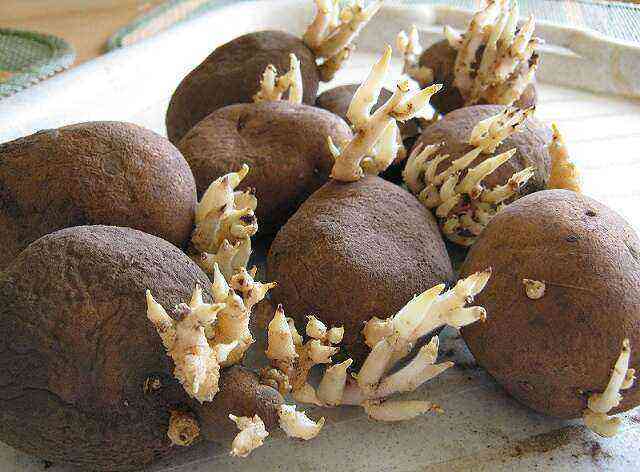
Tubers weighing at least 70-80 grams are chosen as seeds. If the gardener is not going to save money, then potatoes weighing 100-120 grams can also be planted, they can more easily tolerate temperature changes and sprout faster. For disinfection, tubers are soaked for 20-30 minutes in a weak solution of potassium permanganate. On average, you need about 40 kg of seed potatoes per hundred square meters.
Germination is best done at a temperature of about 10-15 ° C:
- firstly, it is at this temperature that the potatoes will begin to develop in the soil, and the tubers can easily acclimatize;
- secondly, at a higher temperature, the shoots will begin to grow too quickly, become long, but too thin and fragile. At 10-15 ° C, the shoots will be shorter, but thicker and stronger, which is what you need.
There are several ways to germinate (vernalize) early potatoes:
1. Arrange the tubers in a cool room (for example, on a loggia) in 2-3 layers. Racks or boxes are often used for this. It is very important to turn the potatoes once a week so that they germinate synchronously and evenly. About once every 5-7 days, the tubers are lightly sprayed with water.
2. Fold tubers of 5-6 kg in transparent plastic bags, in which holes are made in advance for air access. The packages can be hung on the loggia. Then it is convenient to carry potatoes with shoots in them to the site.
3. Potatoes will grow much faster if they are planted in the ground not just with shoots, but with an already formed root system. To do this, approximately 10-15 days before planting, 3-4 cm of sawdust or peat mixture is poured into the boxes. Then sprouted tubers are laid out in one layer and covered with the same mixture. Potatoes should be watered with warm water. For disinfection, you can add one teaspoon of copper sulfate to 10 liters of water. To feed tubers, dissolve 10 g of potassium sulfate, 10 g of superphosphate and 20 g of ammonium nitrate in 5 liters of water. Ten liters of water is enough to water 2-3 m² of potatoes planted for rooting.
Planting technique for early potatoes
In some southern regions, early potatoes are planted in March, in central and northern regions – in April. This can be done only when the soil temperature at a depth of 6-8 cm is at least + 5-7 ° C.
The distance between the rows of potatoes should be about 60-70 cm, between the bushes in a row – 20-25 cm. When planting rooted tubers, they are transferred into the hole very carefully, in a whole lump, along with the mixture on which they grew. On top of the hole, you can pour a little humus (at the same time serve as a fertilizer and warm the tubers), a handful of ash, eggshells, onion peels (it scares off the Colorado potato beetle and wireworm), a little dry bird droppings. When the potatoes are planted, the surface of the beds, in order to avoid the formation of a soil crust, should be slightly loosened with a rake or harrow.
The weather in spring is capricious, and frosts can ruin most of the harvest. To prevent this from happening, it is recommended to grow early potatoes under agrofibre or plastic wrap.
Growing early potatoes under film
Polyethylene film is able to protect tubers planted in the ground from frost and sudden cold snap. After planting, it is enough to cover the beds with strips of polyethylene and sprinkle the edges with earth so that the film is not blown away by the wind. The material should not be pulled too tight, otherwise the young shoots will bend or break.
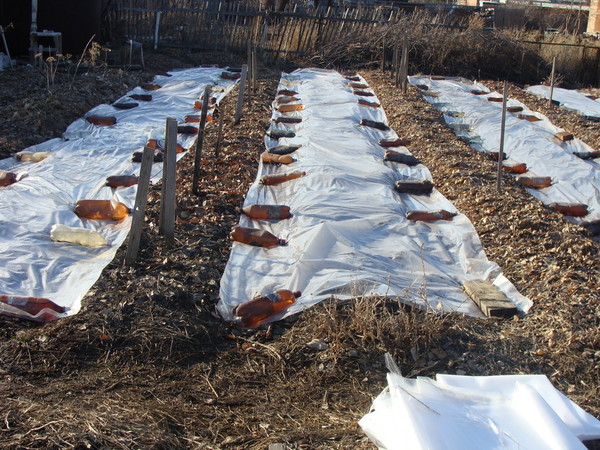
Until the potatoes rise, they do not need ventilation. But the sprouts already need air. The film does not let it through, therefore, after the emergence of shoots, it is periodically removed, and when the bushes grow to a height of 10-15 cm, small ventilation holes are made (in a checkerboard pattern, about every 15 cm).
A bed covered with polyethylene must be constantly looked after: in warm weather, under a film, the earth can heat up to 40-45 ° C, and at high temperatures the growth of tubers stops. When warming, the polyethylene is removed, with the threat of frost, it is pulled again.
It will be somewhat less of a hassle if the film is pulled over the frame: arcs 30-35 cm high installed above the garden bed made of willow rods or a metal bar. In this case, the potatoes will receive more air. However, in order to avoid overheating, you should carefully monitor the temperature in the greenhouses.
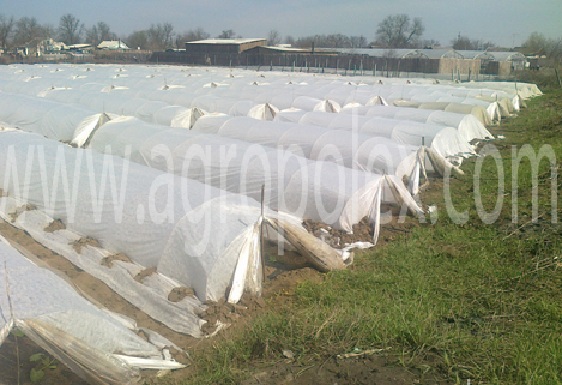
Growing early potatoes under agrofibre
Agrofibre (spunbond) is a polymeric non-woven material that, just like polyethylene film, heats plants, but, unlike film, allows air and moisture to pass through, which is the main advantage. Light agrofibre is translucent and transmits sunlight. The material is perfectly erased. The width of the panel is 120-180 cm, therefore 2-3 beds are usually covered with one strip.
Depending on the density and quality of agrofibre, it can be used for 3-4 seasons. For covering potatoes, material with a density of 20-30 grams per square meter is best. Such a spunbond is light enough so that young shoots can withstand its weight without damage to themselves. At the same time, even if frosts hit when the potato bushes reach a height of 10-15 cm, only the upper leaves, directly abutting the agrofibre, will suffer.
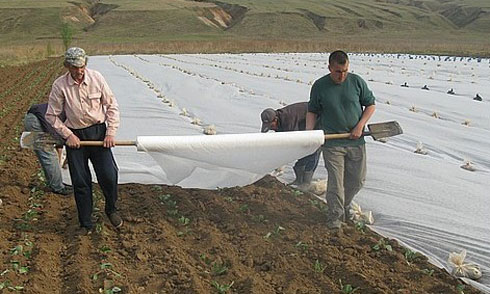
The bed is covered with agrofibre in the same way as with polyethylene: immediately after planting the potatoes, without pulling, dropping the edges, pressing them with pebbles or plastic bags filled with earth. The material with thickened edges lasts the longest. After harvesting potatoes, tomatoes, eggplants or zucchini are often covered with agrofibre so that they bear fruit longer.
Spunbond can also be pulled over the frame, in such greenhouses the potatoes will be moderately warm and spacious, and the gardener will not have to worry that the plants will overheat or suffocate.
If there is a threat of very strong frosts, it is advisable to cover the potato bed with agrofibre, and stretch a plastic wrap on top of the frame.
Dark agrofibre is also used to protect potatoes. Unlike light, it is intended for single use. In such cases, the bed is covered with non-woven material immediately before planting, and cross-shaped cuts are made in the canvas over the future holes.
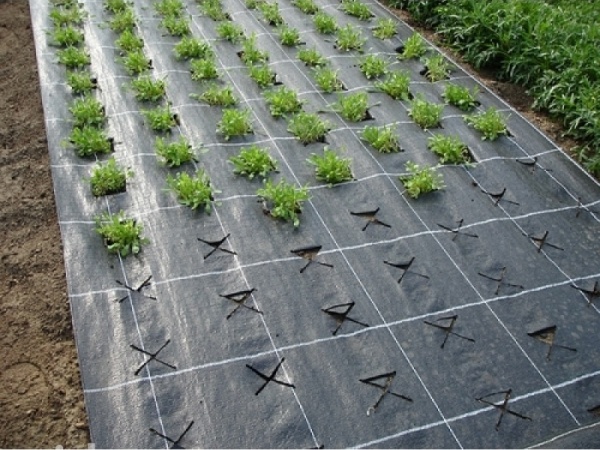
With this method, the tubers will be reliably protected from weeds, but from frost – only until shoots appear. When this happens, you should install a frame over the bed and stretch polyethylene or light agrofiber over it.
Spunbond is advisable to use in cases where the temperature does not drop below -6 ° C during frost. In case of more severe frosts, it is recommended to use plastic wrap or both materials at once.
Early potato care and harvest
When the warm weather is finally established and the threat of frost has passed, polyethylene and light agrofibre can be removed. But you should not rush, potatoes ripen faster under the covering material. Dark agrofibre remains on the ground until the very harvest, it serves to mulch the soil, preventing weeds from growing. Otherwise, caring for early potatoes is no different from caring for ordinary ones.
Bushes, covered with light spunbond, spud when the sprouts reach a height of 15-20 cm. In dry summers, potatoes should be watered once a week (4-5 times before flowering). Hilling is done only after rain or watering.
During watering, the bushes are fertilized. The first time – 2-3 weeks after planting (make 15 grams of urea per square meter), the second – before budding, using potash fertilizers for feeding.
Depending on the timing of planting, the first digging is possible already from May, but the main harvest is harvested from the end of June to July, when the potatoes turn red and the leaves begin to turn yellow.
Advantages and disadvantages of the method
The only drawback of growing early potatoes under agrofibre is the need to invest additional funds in the purchase of covering material.
But all the costs are more than offset by the size of the crop. Even late varieties of potatoes planted under spunbond ripen at least 3 weeks ahead of schedule. This means that the plants have time to bloom before the mass reproduction of Colorado beetles begins.
When using covering materials, the yield of potatoes increases by 10-15%.

